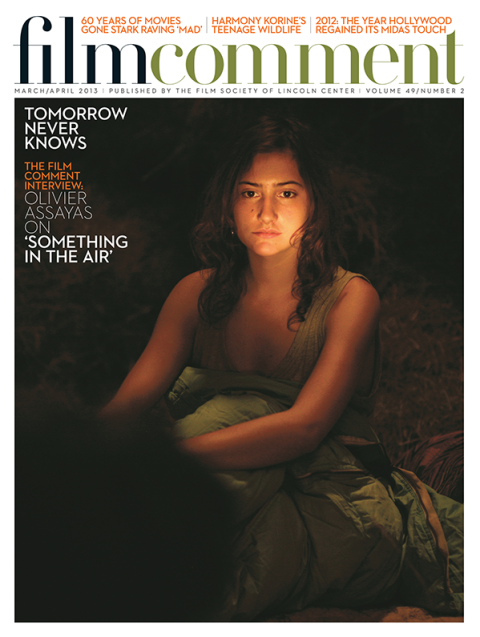
The Wild One
A shriveled-up little vampire in a wheelchair, his flesh as weathered and corrupt as a crab apple left too long in the sun, barks at a buxotic wondergirl who’s spilling out of a microscopic party dress two times too tiny for her ample charms: “Babydoll, will you shut that thing off?!”
Her name is Shawn Devereaux, and she’s kittenishly fiddling with the hi-fi in Russ Meyer’s under-sung censorship satire The Seven Minutes (71), while the meaty-faced pig-men in the room have important business to discuss. The man doing the barking, many years her senior, is the great Jay C. Flippen, born 1899 in Little Rock, Arkansas. A one-time teenaged blackface comedian (who billed himself as “The Ham What Am”), protégé of the legendary African-American entertainer Bert Williams, early radio sportscaster, Thirties jazz singer (of “naughty” tunes like “She Knows Her ‘Onions’”), vaudeville headliner and frequent marquee-topper at the Palace Theatre on Broadway, Flippen was one of Hollywood’s most familiar character actors. Gracing the screen one last time as Meyer’s Watergate-era political power broker Luther Yerkes, he only looks like a vampire. Wickedness warmly radiates from his alarming visage—as if Satan had just swallowed Richard Nixon and was turning slowly towards you, hungry for more. Flippen, one of his legs amputated after complications from diabetes (during the shooting of Cat Ballou), was dying as he played the part. He’d never been better.

Intrigue
Jay C. (sometimes J.C., and “Flip” to his friends) Flippen cut a broad swath across 20th-century American culture. At the peak of his Hollywood career, his face was a fixture of mid-century horse operas and urban thrillers, and so it’s baffling that his glories aren’t better remembered today. He’d made a couple of musical shorts for Paramount in the late Twenties, and again for RKO in the late Thirties, primarily to showcase his chops as a singer, funnyman, and all-purpose emcee. But New York audiences loved him, as did his peers in the trade, and he remained East Coast–moored and theater-based until the end of the Forties. After minor bits as a prison screw in Jules Dassin’s Brute Force and as George Raft’s bartender in Intrigue in 1947, his screen career finally began in earnest with Nicholas Ray’s They Live By Night (48), as the avuncular escaped con “T-Dub.” A history of the macho Hollywood of the Fifties could be wrapped entirely around Flippen’s name. He supported Jimmy Stewart in Anthony Mann Westerns (Winchester 73, The Far Country, Bend of the River) and action pictures half a dozen times. King Vidor (Man Without a Star), Robert Wise (Two Flags West), Allan Dwan (The Restless Breed), Henry Hathaway (From Hell to Texas), and Budd Boetticher (East of Sumatra) all worked with the actor, who held his ground across from John Wayne in von Sternberg’s Jet Pilot (57), lay down the law to Marlon Brando in The Wild One (53), and found himself almost back in blackface as the Sioux brave “Walking Coyote” (supporting a deeply conflicted Rod Steiger) in Sam Fuller’s Run of the Arrow (57).
But Flippen hadn’t spent all those years on the boards just to play trail coots and dyspeptic ex-cons (classic though his palpably homoerotic turn in Stanley Kubrick’s The Killing may have been). When directors called for a lighter touch or a bit of song and the old soft shoe, he could happily comply, as he did thrice in 1955 in Stanley Donen and Gene Kelly’s It’s Always Fair Weather, Fred Zinnemann’s Oklahoma!, and Vincente Minnelli’s Kismet. His slightly light-on-his-feet air helped ensure his durability: for all the big-screen and TV Westerns Flippen made through the end of the Sixties, he’s just as well (or just as little) remembered for his weekly comic turns as Chief Petty Officer Homer Nelson on the naval sitcom Ensign O’Toole (62-63), or his featured appearance as Rob Petrie’s mentor, aging comedian Happy Spangler, during the first season of The Dick Van Dyke Show (61-62). Way back in 1930, when Variety celebrated Flippen’s blackface “style, delivery voice, diction, face and every gesture” as “built for cork” (the blackening agent minstrelsy long employed), they’d only begun to scratch the surface of his talent. The cork wore off, but the star shines on.








